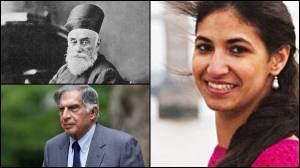Now in its sixth edition, ILF Samanvay has grown by leaps and bounds. Rizio Yohannan Raj, creative director of the festival, tells Nitin Sreedhar what makes ILF Samanvay more of a people’s movement than a sponsored event. Edited excerpts:
Being a bilingual writer and educationist, how important do you think is this festival?
A remarkable thing that distinguishes ILF Samanvay from other festivals is that it’s an Indian languages festival, not a lit fest. When there is a big sponsored event, there is the compulsion of a certain kind of footfall, etc. In our case, the basic structure—the venue—is provided by the India Habitat Centre (in New Delhi). There is a basic budget… we don’t pay anybody any honorarium. So it allows us to function without big sponsorship, which means you can retain your freedom of thought and expression. The second aspect is that, since last year, we have put a vision manifesto, which tries to understand language as something that goes beyond verbality… the fest is more of a people’s movement than a sponsored event.




What have you achieved so far?
The fest started in 2011 when the director was Raj Liberhan. It was his initiative. We had two founding curators, Satyanand Nirupam and Giriraj Kiradoo. I was their advisor. Then those two left and they requested me to be the creative director. The festival has expanded its scope and mandate since then. Earlier, there was no other segment apart from the amphitheatre panel discussions. Now, we have an art exhibition and a full-scale food and performance part as well. It’s a cohesive whole now.
The theme of ILF 2015 was ‘Insider/Outsider: Writing India’s Dreams and Realities’. What was the inspiration behind this year’s theme of ‘Language as Public Action’?
Last year, we wanted to look at the creative individual. Whether their dealing is in science, industry or money, the creative individual is always an insider-outsider. Life is fluid and the creative individual is always engaging with this fluidity of time, space and beings.
This year, we wanted to take that discourse a little further because that insider-outsider would also mean private-public. Language in the public space has become falsely empowering because of a lot of factors, which is very problematic.
What was the idea behind choosing Urdu, Telugu, Gujarati, Santhali and Khasi as the focal languages for this year’s festival?
We wanted to represent all the five regions of the country. We don’t hierarchise between languages. Even if there are two speakers of a language, it’s important to us. While selecting a language, the important criterion is to look at the region and see which language needs the most attention. In Telugu, we wanted to take a look at the voice of the marginalised. In Urdu, the major concern was whether something was happening in the language apart from its reminiscent and glorious past. In Khasi, we looked at the problem of script in the north-eastern space. Even Santhali… it’s an Eighth Schedule language, but we don’t know what’s happening there.
What more can be done to ensure that these languages aren’t lost or forgotten?
The world is becoming very small in terms of communication, so there is no point denying that reality. Our attempt is to see how we can create a platform where we can look at the problems of a particular linguistic space. The most important thing is to connect. Through that connection, various understandings can come.
















